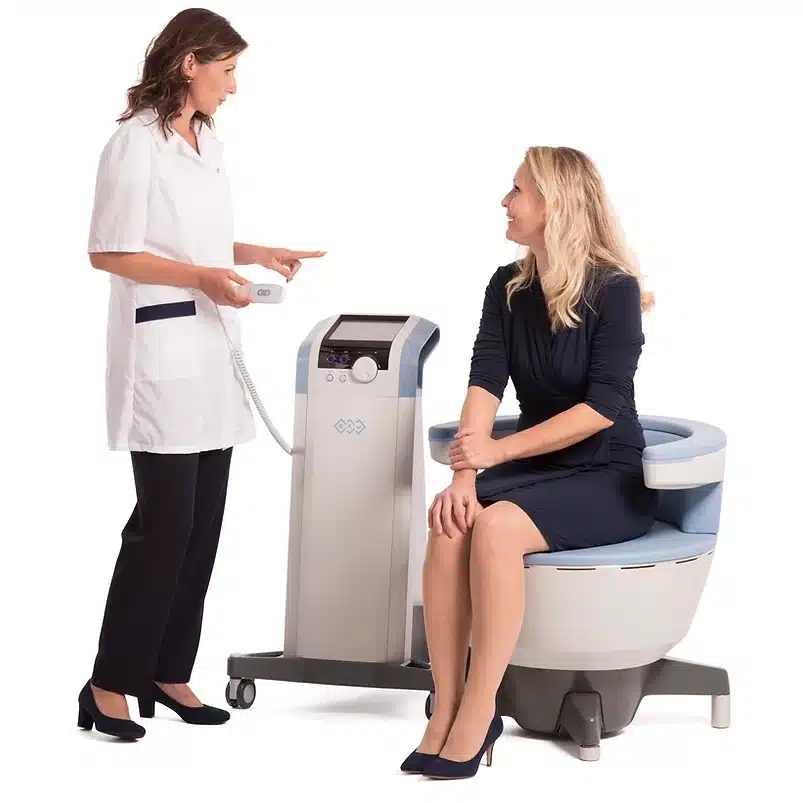What Is Emsella?
Emsella™ is an FDA-cleared chair device that uses electromagnetic field induced muscle contraction to strengthen bladder and pelvic floor muscles to improve pelvic health.
In strengthening these muscles, Emsella™ significantly reduces the symptoms related to incontinence. In addition, a stronger pelvic floor can help reduce urinary urgency or symtpoms overactive bladder including nocturia – waking up in the night to void – and can even improve sexual satisfaction by improving pelvic blood flow.
The Emsella™ is the first device of it’s kind – a chair that uses a high-intensity electromagnetic field (similar to an MRI) to activate motor neurons in the pelvic floor and treat urinary incontinence.

The Treatment
By strengthening the pelvic floor, sufferers of Stress and Urge Incontinence can see great improvements. These sufferers lose or have weakened control over the urinary sphincter, and Emsella restores the strength to those muscles and tissues.
One 28 minute session will induce over 11,000 contractions.
- FDA cleared for both males and females
- Stress, urge, and mixed incontinence
- Non-surgical, non-invasive procedure
- 28 minute periodic stress-free, fully-clothed sessions
What’s It Like?
During the treatment, there is a sensation of stimulation and tingling with some reporting that they can also feeling the muscles contracting.
Each contraction is the equivalent to a long squeeze when controlling your bladder. Only in this case it happens in a fraction of a second. By working these muscles they become stronger and more effective.
You may resume daily activities immediately after the treatment.
How Well Does It Work?
Well, the statistics speak for themselves (after 6 treatments):
- 95% of treated patients improved their quality of life.
- 75% of treated patients reduced or totally eliminated day-to-day use of hygienic pads.
- 100% of patients reported better awareness of pelvic floor muscles.
We love this therapy because rather than treating a symptom, we address the core issue. Strengthening the pelvic floor muscles is the best way to target incontinence at its source. These muscles are the layer of muscles that support the pelvic organs and span the bottom of the pelvis. Strong pelvic floor muscles gives you control over your bladder and bowel. Weakened pelvic floor muscles mean your internal organs are not fully supported and you may have difficulty controlling the release of urine. Technology has given us the potential to dramatically improve your quality of life and help you feel better!
FAQs
Your provider will tailor a treatment plan for you. A typical treatment takes about 30 minutes and you will need about 6 sessions, scheduled twice a week.
You will experience tingling and pelvic floor muscle contractions during the procedure. You may resume daily activities immediately after the treatment.
You may start to observe improvement after a few sessions. The results will typically continue to improve over the next few weeks.